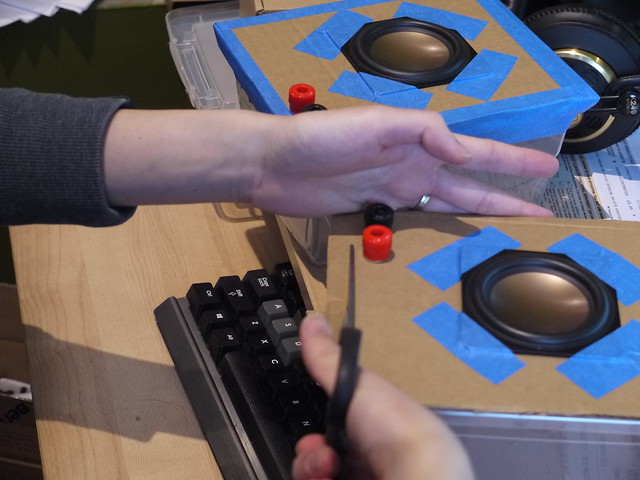Raspberry Pi, openFrameworks
I've been doing some work with the Raspberry Pi lately with openFrameworks, and it has served as a great reminder how accessible these hardware and software platforms are for building stuff.
Setting up the RPi for oF is super simple, and relatively well documented. The extra hurdle that is worth jumping over in the setup process, is cross compilation. I followed the
official guide here, and found a few steps that were missing. The cool thing with oF is that its a very active community, and I was able to update the documentation, and push it to the official webpage within a matter of hours. Currently the instructions should be up to date for the active version (0.8.4).
Cross compiling on a desktop (i7-4770k) VM running Ubuntu sped up the compile time from over 1 hr for the entire library to less than 1 minute. Basic apps went from 2-3 minutes to a couple of seconds. Therefore, the amount of time it takes to set up the cross compile is more than worth it for any kind of significant dev work. Currently my setup involves SCP'ing the compiled binary to the RPi, but it would be possible to set up the shared file system to avoid this step.
DistCC is also another way but is slightly more involved (IMO).
Media Performance
One of the applications I'm currently working on for the RPi, is the interactive playback of videos. Due to the well optimized GPU libraries available, the RPi has quite impressive video decoding capabilities for the amount of overall raw processing power. For oF, there is a
nice wrapper of the OMXplayer on the Pi which takes full advantage of the hardware decoding capabilities. As such it is possible to easily run HD video in an interactive application in your openFrameworks app. Here's a
nice page from creativecoding.net describing a few things you can do to get started with oF and Rpi
Analog to Digital on the RPi
One thing that the RPi lacks, compared to other boards like the BeagleBone Black, is built in analog to digital (A2D). The 26 GPIO pins (or 40 on the newer A+/B+ models) are digital only, so if you want to interface analog sensors, you have the following options:
- Use another microcontroller (such as the Arduino, teensy, etc) on the USB port and run an app that talks to the virtual serial-USB. This is quite common since the set up is very similar to when using such a microcontroller with a desktop/laptop environment. However, it does add a greater cost, and also on systems like the A/A+ board, you only have a single USB port that you might want to use for something else without having to add an extra hub...
- Interface an A2D on the GPIO. There are a few common methods, and each one requires some hardware that provides either: UART, I2C, SPI, or cook you own A2D solution such as described in
this excellent post by Hertaville that also demonstrates how typical A2Ds work. For my initial attempt, I used the
MCP3008 SPI chip, due to local retailer availability and some quick online reading. To get the pins of the RPi easily exposed on a breadboard, I used the
ElecFreaks GPIO adapter kit. I'm not sure if I'm using it correctly, but there seems to be a major flaw in the design of this adapter board: the power rail pins
do not line up with the rest of the header pins. Either I'm not using it the right way, or there was a bit of a design flaw here...
Anyway, here's a quick screenshot of a quick test program using using the
wiringPi library:
Next steps: brushing up my PCB design to build a small breakout board for this chip, as well as looking at potential alternatives. The drawback of this SPI implementation is that without any further multiplexing, we're limited to one of two channels, which means a max of 16 input pins using 2 MCP3008's.



